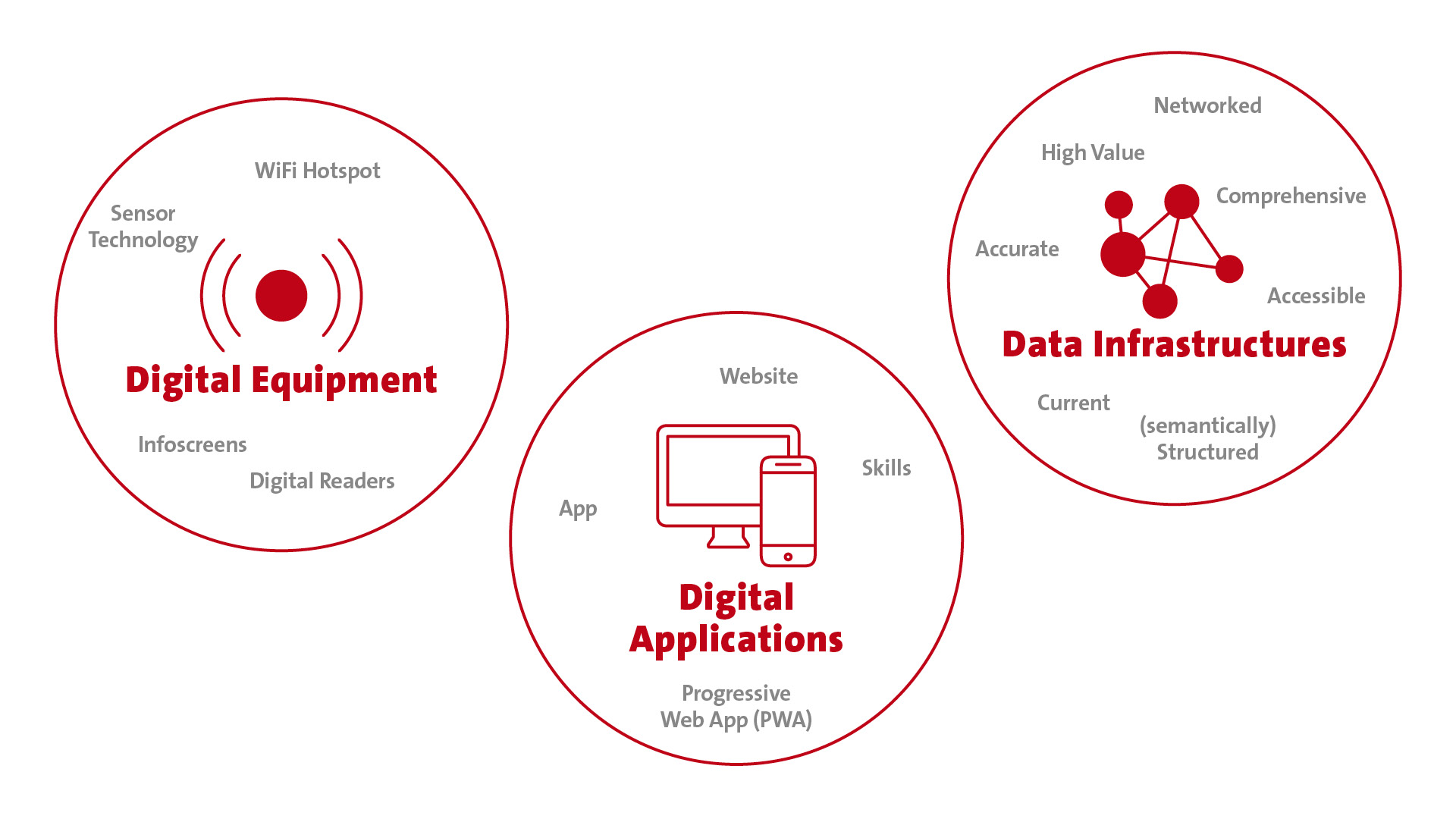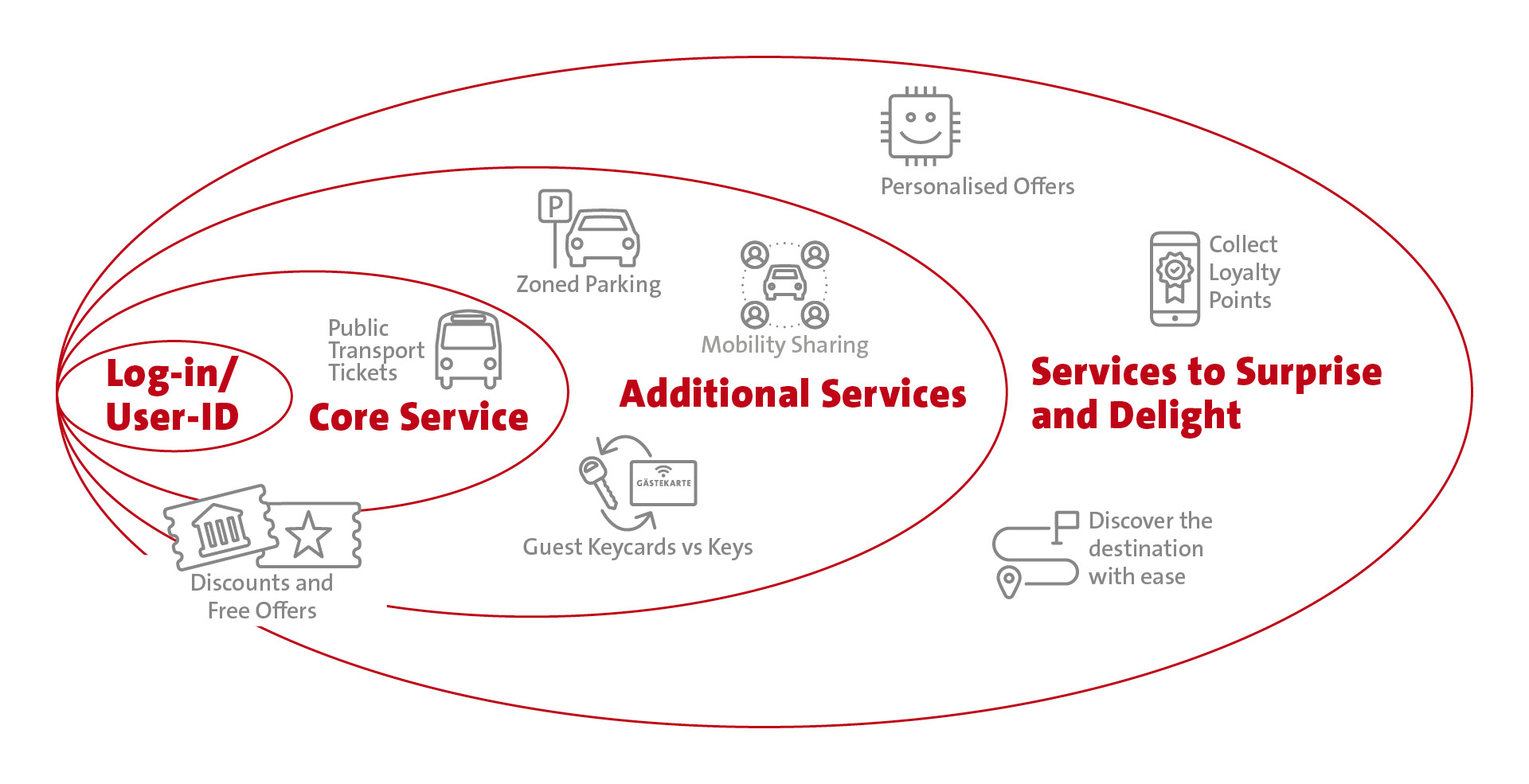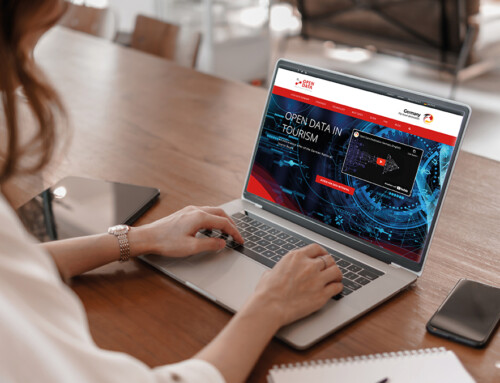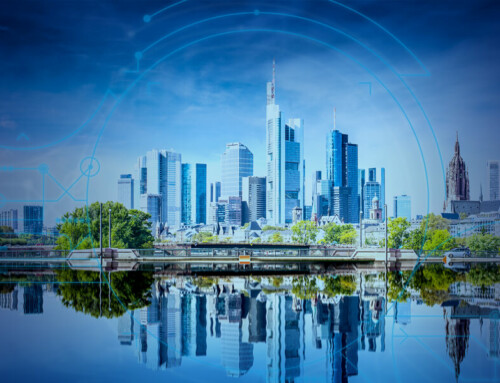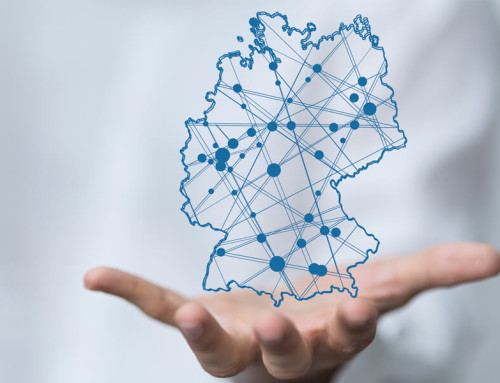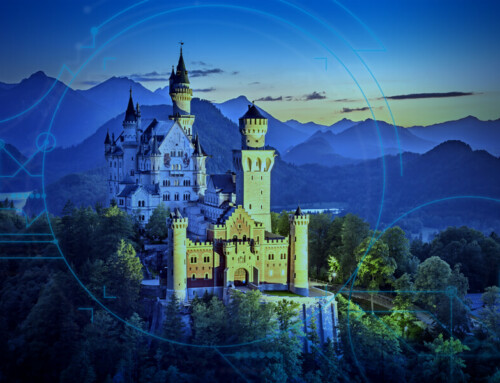A digital infrastructure for guests.
Destination management organisations (DMOs) have to adapt to the changing behaviour of guests. For a DMO, establishing a digital infrastructure is crucial for the future. However, this infrastructure has long since ceased to refer only to a modern website. Guests inform themselves about the holiday destination on various channels. They are also online at the holiday destination with their smartphone, tablet or laptop and book additional services directly there. Guests should therefore be picked up digitally where they are. Three key elements can be distinguished in the digital tourism infrastructure: Digital equipment, data infrastructure and digital applications.
A digital tourism infrastructure can be divided into digital equipment, data infrastructure and digital applications.
Digital Equipment
In order for digital services to be used, data exchange must be guaranteed. A good internet connection is elementary, but by no means standard in rural tourism regions. For the guest, free WLAN hotspots are therefore all the more important. The equipment also includes transponders (readers) for digital access control to destinations such as swimming pools or ski slopes. In addition, there should be the possibility to pay digitally with the smartphone – be it for the beach chair or the après-ski drink. In the future, sensor technology will also gain in importance in the form of transmitters that measure parking lot occupancy or restaurant capacity in real time and forward this information to digital applications.
The basic prerequisite for the use of digital services can be created in rural tourist destinations via WLAN hotspots.
Data Infrastructure
However, digital hardware systems are only of use to guests if the corresponding data quality is available. Good data is characterised in particular by its integrity, accuracy and timeliness. In addition, editorial content should of course be created to a high standard so that the destination is presented accordingly well.
The data infrastructure for the destination focuses on all information that is important for orientation at the holiday destination itself. It is irrelevant where guests retrieve the data. They should be enabled to access the information on all important channels, so their different “digital habits” should always be taken into account. Conversely, this means that data should be prepared in such a way that they are independent of the output medium and are therefore available on all conceivable channels. For this purpose, the data must be structured in such a way that they are machine-readable and are available in an open standard and freely licensed. Then they can be related to others (networking) and played out independently of the respective output device.
Data should be prepared in such a way that it can be played out regardless of the output channel and licensing restrictions.
Digital Applications
Digital applications are apps, voice assistants, websites, etc. They can either be provided by the destination itself or they are third-party applications (for example Google Maps). All the digital touchpoints guests come into contact with impact the overall experience. Applications are the interface to the guest, they connect the data infrastructure with the digital equipment and put it into value.
Digital applications form the interfaces to the guests.
Guest Card as a Master Key
The example of the digital guest card is a very good illustration of how the offers of a destination can be transferred into digital services. The traditional guest card can become a central strategic instrument if it is supplemented digitally. It can still be offered as a real card so that guests are not irritated and can maintain their habits. At the same time, those guests who are digitally experienced can be given the opportunity to use the digital terminal as a substitute for the guest card. The parallel use of guest card and smartphone is possible if a complementary application is offered in the form of a native app, a progressive web app (PWA) or a mobile website via which additional services and information can be integrated. A log-in should take place via the digital counterpart, so that data of the users (after their consent) can be collected via the identification.
A digital guest card can be offered in the form of a physical card, digitally on a smartphone or smartwatch. It is important to have a complementary digital application through which additional services can be offered.
The digital guest card can be used by guests as a general key in the destination.
Additional functions such as route guidance or alternative offers can be integrated into the guest card via the digital supplement.
Impress Guests with Lasting Enthusiasm
A guest card can serve as an interface for various services within the destination through the expansion of digital components. Core benefits are usually free local transport and discounts or even free access to attractions in the region such as ski slopes, swimming pools or museums. With these core services, countless additional and exciting services can be developed through the possibilities of digitalization. The guest card is at the heart of this, it is used to pay, it ensures discounted access to excursion destinations, public transport, car sharing etc.. Low-threshold access to the guest card is an advantage so that it can be distributed as widely as possible. The more guests use the card, the more attractive and important it is for the region and its guests.
For the DMO, a well-functioning digital guest card can be an important control element in visitor guidance and in the management of service providers.
The more that can be offered with the guest card beyond the core services, the higher the customer satisfaction can be. Unexpected services can inspire guests.
Examples of Additional Services
Examples of Enthusiastic Performance
Eric Horster
West Coast University of Applied Sciences
Eric Horster ist Professor an der Fachhochschule Westküste im Bachelor- und Masterstudiengang International Tourism Management (ITM) mit den Schwerpunktfächern Digitalisierung im Tourismus und Hospitality Management. Er ist Mitglied des Deutschen Instituts für Tourismusforschung.
Mehr zur Person unter: http://eric-horster.de/
Elias Kärle
University of Innsbruck
Elias Kärle ist Wissenschaftler an der Universität Innsbruck. In seiner Forschung beschäftigt er sich mit Knowledge Graphs, Linked Data und Ontologien. Als Vortragender referiert er meist zur Anwendung und Verbreitung semantischer Technologien im Tourismus.
Mehr zur Person unter: https://elias.kaerle.com/



